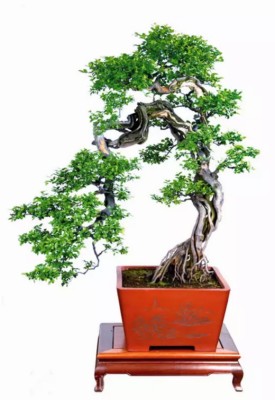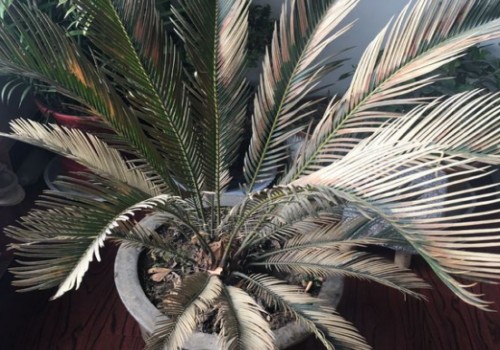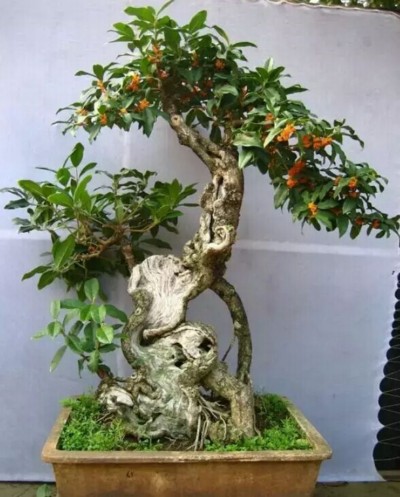The production of sparrow plum bonsai
Sparrow plum, also known as thorn, sparrow plum vine, sour fruit, sour young tree, is a deciduous climbing shrub of the family Rhamnaceae. The bark is grayish brown and the branchlets are slender with needles. Leaves opposite, ovate or elliptic, margin serrulate, thinly leathery and bright green. Light yellow flowers in autumn and winter, drupe nearly spherical, purple-black when ripe, edible, sour and sweet. It is one of the main tree species of Chinese stump bonsai, one of the five famous trees in Lingnan bonsai, and also one of the bonsai plants exported to the United States after China's entry into WTO.

The production of sparrow plum bonsai
1. Draw materials
For making Finch plum bonsai, annual branches can be selected for cutting propagation in March or Meiyu season, and striping propagation can also be carried out from April to June: when the fruit is ripe, it can be sowed along with the seeds or sowed in the seedling bed after being dried in the shade; in the provinces south of the Yangtze River, wild old root piles or young trees can also be excavated in the wild mountains, and soil pots can be processed after "raising billets" are planted in the field.
2. Modeling
Finch plum has the advantages of strong growth, long life, easy modeling, strong germination, resistance to pruning, soft twigs and easy banding. Most of them are processed by coarse binding and fine shearing, and the complete pruning method (that is, "storing branches and cutting dry method") can also be used. The tree shape is often made into oblique dry type, horizontal dry type, curved dry type, dry type, double dry type, cliff type, root lifting type and so on. Most of the leaves are trimmed into natural style, or they can be processed into cloud flakes or steamed buns.
3. Upper basin
It is appropriate to transplant into the pot before sprouting in February-March in spring. Choose lighter purple sand basin or glazed pottery basin, basin shape to lighter or medium-deep rectangular basin, oval basin is appropriate. The basin soil should be made of loose and fertile slightly acidic rotten leaves, river mud and pond mud mixed with sand. When planting in the soil basin, the root system should be properly trimmed, the lateral root and fibrous root should be obstructed to loosen the fertile soil, and the bottom of the basin should be covered with rubble to facilitate drainage and ventilation.
Time: 2019-05-26 Click:
- Prev

What is the yellowing of the leaves of the iron tree?
Iron tree is an ancient evergreen plant, which not only has high ornamental value and long life, but also has a good effect of greening and beautifying the environment, so it has a wide range of applications. But if the maintenance environment we provide is not good or if it is not properly managed
- Next

Grafting method of Osmanthus fragrans Bonsai
Sweet-scented osmanthus is a good tree species for processing bonsai because of its luxuriant branches, evergreen seasons, intertwined roots, beautiful posture, gorgeous flowers and fruits, fragrant flowers, strong sprouting, pruning resistance, long life and other biological characteristics. The production process of sweet-scented osmanthus bonsai is complicated, learning from nature and wonderful.
Related
- Fuxing push coffee new agricultural production and marketing class: lack of small-scale processing plants
- Jujube rice field leisure farm deep ploughing Yilan for five years to create a space for organic food and play
- Nongyu Farm-A trial of organic papaya for brave women with advanced technology
- Four points for attention in the prevention and control of diseases and insect pests of edible fungi
- How to add nutrient solution to Edible Fungi
- Is there any good way to control edible fungus mites?
- Open Inoculation Technology of Edible Fungi
- Is there any clever way to use fertilizer for edible fungus in winter?
- What agents are used to kill the pathogens of edible fungi in the mushroom shed?
- Rapid drying of Edible Fungi

